Long before Schitt’s Creek‘s fictional setting became the symbol of all that is good about small-town Canada, another CBC television show catapulted a real-life Canadian place to international fame: The Beachcombers, filmed on site in Gibsons, B.C. For 19 seasons, from the first episode in 1972 until the final one in 1990, viewers around the world avidly followed an ensemble of actors led by Bruno Gerussi as they salvaged timber lost from log booms, swigged coffee at Molly’s Reach diner and generally figured out how to put Canada’s best foot forward, complete with a catchy theme song.
It was the portrait of a hardscrabble world where you took what you could from the land and the sea, by chainsaw, backhoe, fishing gear or plucky tugboat. And sure, the scenery was terrific: seascapes and mountaintops and lush forests. But it wasn’t the main point. Nature was the backdrop.
You may unsubscribe from any of our newsletters at any time.
Today, Gibsons is internationally renowned for something quite different. It is one of the first municipalities in the world to declare that nature has a formal book value in the town’s accounts. So the aquifer that sits underneath the town of 4,600 has a place in the financial life of the community just like the roads do. And town officials have to maintain this natural infrastructure just like they do with traditional bricks-and-mortar assets.
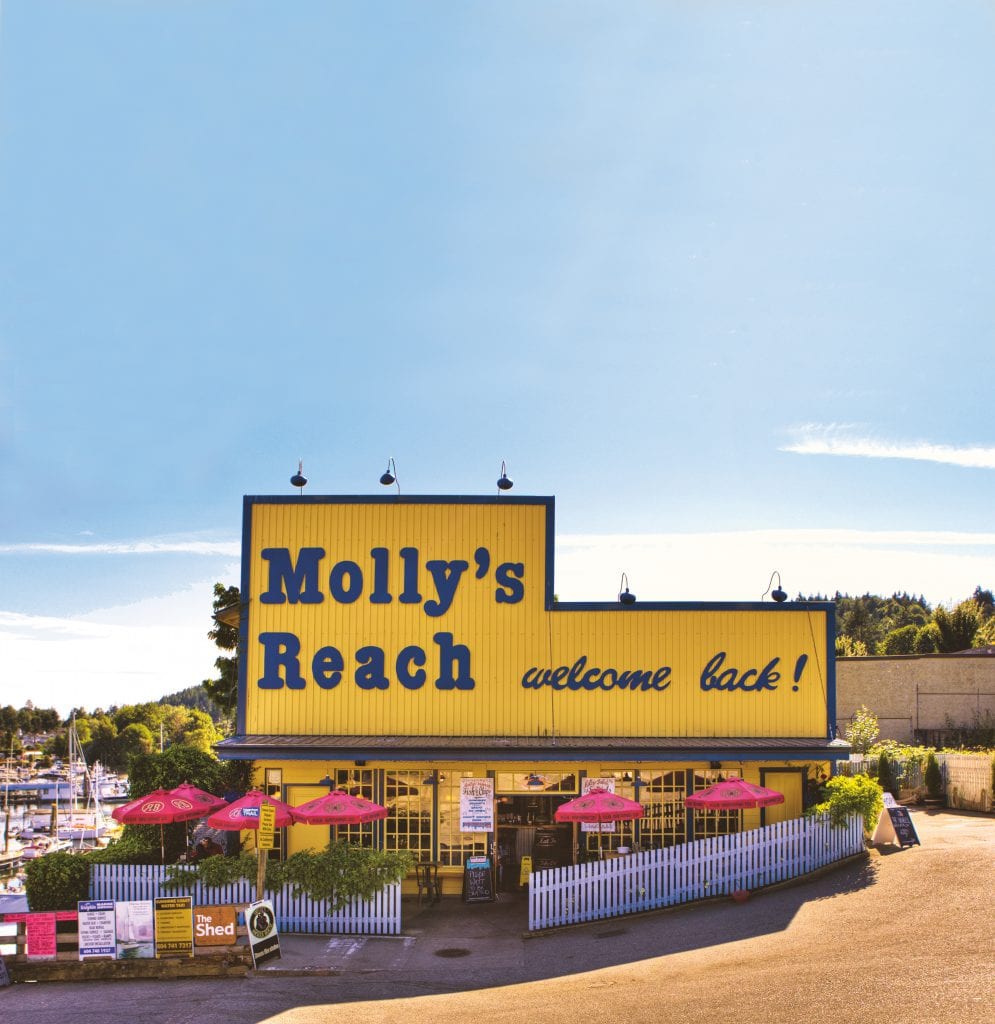
This novel accounting strategy is key to Gibsons’ efforts to protect itself from climate disaster. It’s also gaining an international fan base. Town officials have been presenting the “Gibsons model” of bookkeeping all over the world since 2015.
“It’s really shown its durability as an approach,” says Emanuel Machado, the town’s chief administrative officer and chief resiliency officer. “It’s as much about climate adaptation as it is about infrastructure management as it is about nature as it is about just livability.”
The Gibsons model is part of a brand-new way of thinking — and talking — about environmental problems. It’s called “nature-based solutions,” a hot new term that enfolds many of the abstruse phrases scientists and policy-makers have been bandying about for decades, including carbon sequestration, sustainable development, ecosystem services, natural capital and ecological resilience. The basic idea: Mother Nature can help heal the planet from our sins if only we’ll let her. That could mean creating landscapes that imitate nature or simply leaving nature alone to do her
own thing.
More on Broadview:
- Thawing Arctic permafrost seems like a distant threat. It’s not.
- Eco-conscious Muslims tackle climate crisis by greening Canadian mosques
- 7 lessons for a more spiritual relationship with your garden
In the fight against rising carbon levels, it’s a little like stumbling on a secret weapon that’s been hiding in plain sight. And it’s the polar opposite of how people have traditionally thought about nature: something to be controlled, perhaps feared, but certainly hemmed in and made use of for human needs.
One thing is sure — you’re going to be hearing a lot more about these ideas in the coming years. The International Union for the Conservation of Nature (IUCN) launched a set of global standards for nature-based solutions last year, saying that, if done properly, these techniques could suck up so much carbon that they could get us more than a third of the way toward keeping global heating below 2 C. If it works, it will be a very big deal.
Canada, so rich in wilderness and therefore possibility, is positioning itself to be one of the global leaders. In its fall 2020 economic statement, the federal government pledged $3.9 billion to the effort over the coming decade. That’s earmarked for planting two billion trees and figuring out how to coax wetlands, peatlands, grasslands and even agricultural lands to absorb more carbon. It’s a philosophical pivot about what nature is for: not extraction of resources but absorption of carbon.
And then there’s Gibsons. If the one-time face of our rapacious relationship with nature is now leading one part of the charge, can full-on planetary redemption be far behind?
Gibsons was my second childhood home. I knew it as Gibsons Landing, its original settler name. One whole side of my father’s family moved there after the Second World War — his grandparents and their children and grandchildren. Some of the great-grandchildren live there still.
My dad’s mother, Eva Oliver, lived in a tiny house on Franklin Road, one street up from the ocean, and we ended up there most summers on holiday. I still remember tasting the ocean spray when we pulled into her driveway in our station wagon hauling a camper trailer, the reward after three long, hot days of driving across the Prairies from Regina.
My siblings and I couldn’t wait to clamber down to the beach as soon as we arrived. But these were not the sandy beaches of Caribbean holiday brochures. They were rocky and hellishly hard on tender young feet. The saving grace was the abundance of tide pools where little creatures collected: minuscule crabs, tiny fish, strips of algae. I used to crouch down, peering into their mysteries for hours at a time, registering the rhythm of the waves as the sea crept forward and then back again on the shore. Spending those blissed-out hours on the Gibsons beach probably set the stage for my later writing about ocean science.
But at that time — starting a few years before The Beachcombers began — few people saw the beach or any of the town’s other wild spaces as either a sacred reservoir of life or a sponge for carbon. In fact, the beach was littered with exactly the type of stuff that Gerussi’s character was trying to snag: massive logs, hacked down from old forests, that had escaped their ocean-bound journey to the sawmill. Some were so ancient that as they lay on their sides on the beach, their girth dwarfed me.
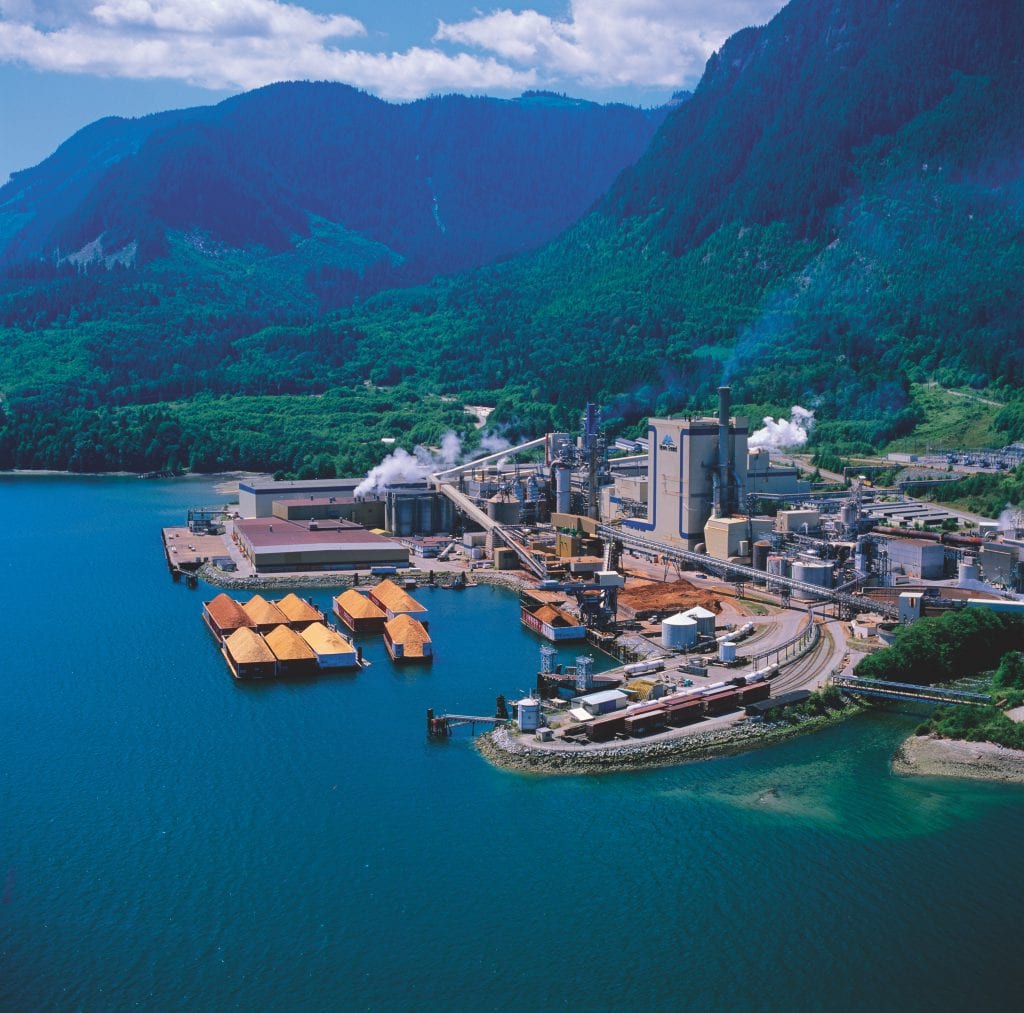
Logging, fishing and subsistence agriculture were the lifeblood of the town, and had been from about the time George Gibson, a British ex-navy officer, tried to carve a 100-tree orchard out of several acres of land there in 1886 so he could set up a fruit trade with Vancouver. A common practice at the time was “stump farming,” which meant blasting the stumps and roots of trees out of the ground with dynamite to clear the land for agriculture.
Trying to make Gibsons into a centre of commerce was a bold play. Gibsons is on the mainland of British Columbia, up the twisty coast from Vancouver, and even now there’s no road. Today, getting there requires a 40-minute trip across the mouth of Howe Sound (now known as Átl’k–a7tsem/Txwnéwu7ts/Howe Sound) by BC Ferries or other boat. Then, it was a more precarious trip by tugboat, and in later years, steamship. That meant vehicles were rare and transportation was tricky. Early photos show oxen hauling logs to the sea.
Shortly after the turn of the 20th century, a pulp and paper mill began operating at Port Mellon on Rainy River, just up the coast of the sound, drawing people from Gibsons by boat to the tent cities set up for workers. Over the years, bunkhouses appeared and then a road that connected Port Mellon to Gibsons. One of my dad’s cousins spent his whole working life employed at the mill. Another spent two years working in the front office. And that mill was just one of a cluster of industrial activities, including a copper mine, on the shores of Howe Sound that led to decades of toxic effluents such as dioxins, furans and metals pouring into the ocean.
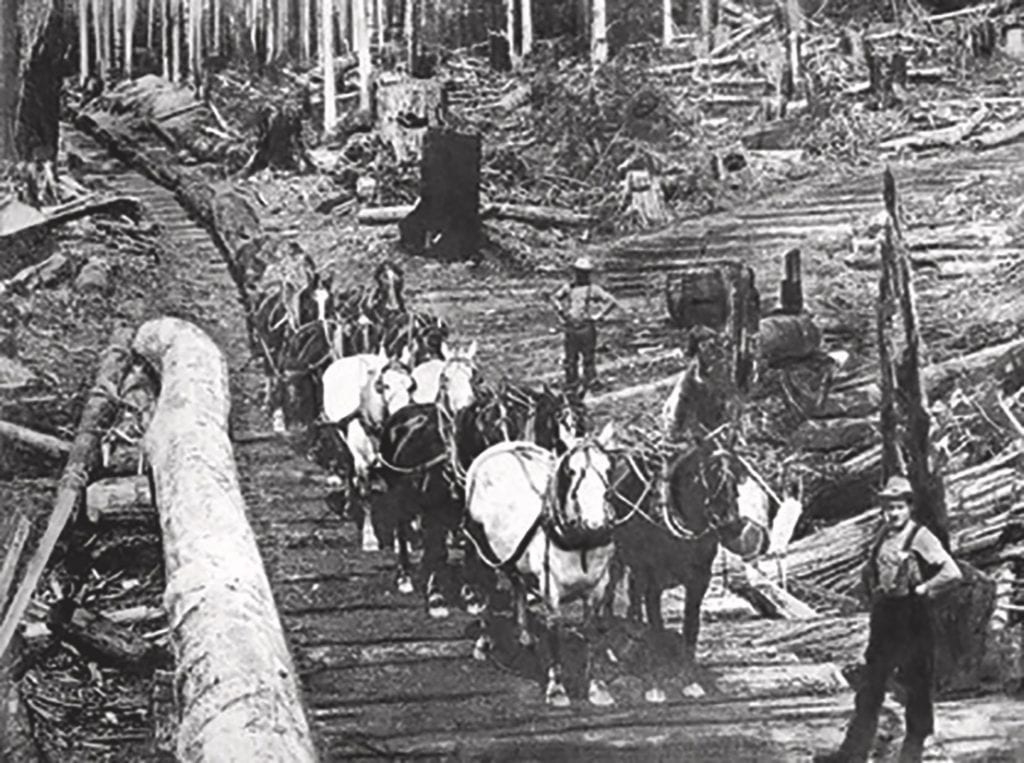
It all gave the distinct impression that Gibsons was a struggling industrial town that just happened to be on a beautiful coast. Even the harbour, which in another place might have been picturesque, seemed hardbitten. To me, it always smelled of motor oil, fish grease and desperation.
The Beachcombers, beloved as it was, evoked the endless quest to grind another dollar from nature. The characters, inevitably dressed in woebegone plaid work jackets, seemed to be one salvaged log away from penury. The show was so knitted into the DNA of the place that you always had the sense that the characters were just around a corner. And sometimes, they were. One early summer morning when my brother Ross was about 10 and on his way to a fishing expedition with our father and his uncle, the crew appeared out of nowhere. A cast member — was it the great Gerussi himself? — shouted something from a few piers away and waved at Ross while the crew shot the scene. Ross, laden with fishing gear, stood dumbfounded. My dad’s uncle, who lived in Gibsons, was used to it. “Go ahead and wave back,” he said. So Ross did.
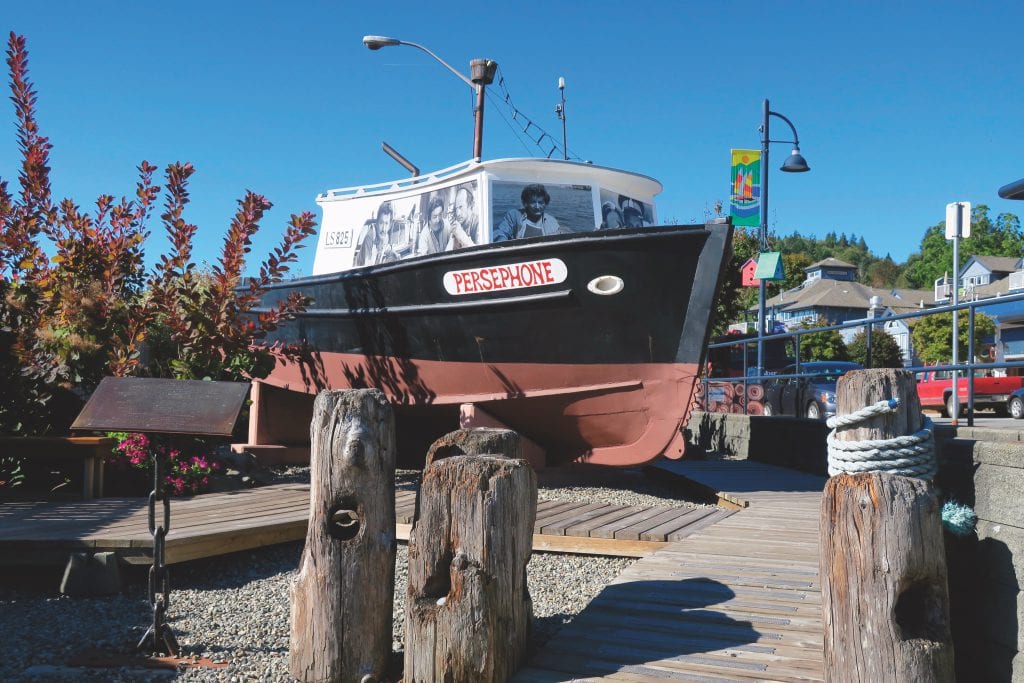
By about the time I spent the honeymoon of my first marriage in Gibsons in the 1980s, the contamination in Howe Sound from the pulp mill and other enterprises was so severe that the government was forced to close down much of the fishery for health reasons. And by 1995, when my dad’s cousin, Gwen Edmonds, took over Molly’s Reach — just a facade during all those years of filming — and made it into a working restaurant, the government had put regulations on the chemicals the mills could spill into the sound.
Things were slowly starting to recover. Making sure the environment wasn’t lethally toxic from waste chemicals was a big shift in thinking. But Gibsons still had a long way to go before it could claim the title of pioneer in the movement toward nature-based solutions.
If Gibsons is the municipal accounting brains behind the movement, Graham Saul is its moral architect in Canada. Saul is executive director of Nature Canada, one of the nation’s oldest environmental organizations. With more than 100,000 members across the country, it’s spent more than 80 years focused on forestalling landscape destruction in a bid to save endangered species, including such charismatic birds as the piping plover, the barn swallow and the sage grouse.
Traditionally, environmental outfits that focus on animals haven’t focused on the climate. They have been two solitudes in Canada. So it’s surprising that Saul is so passionate about harnessing the power of nature to soak up carbon from the atmosphere. In fact, it’s become a calling for him and his organization, a phenomenon that points to the reach of the revolution now underway. For example, Saul was the muscle behind last year’s Nature-Based Climate Solutions Summit, which drew 450 people to Ottawa shortly before the pandemic halted such activities.

“At some stage, nature organizations realized they couldn’t sit on the sidelines,” he says. “They had an obligation. Both a practical and ethical obligation to step up and say, ‘We’re going to be part of the solution, and these are the tools we bring.’”
Some of that is enlightened self-interest. While the climate crisis is not driving the widespread collapse of species right now — that stems mainly from loss of habitat and from hunting and fishing — over time it will impair the systems that support species. A damaged climate will make it impossible to bring beloved creatures back from the brink.
But the campaign to stabilize the climate, long a cerebral pursuit, also needs the boots-on-the-ground passion of those who have a long and ardent history of standing up for healthy landscapes and river runs, Saul points out.
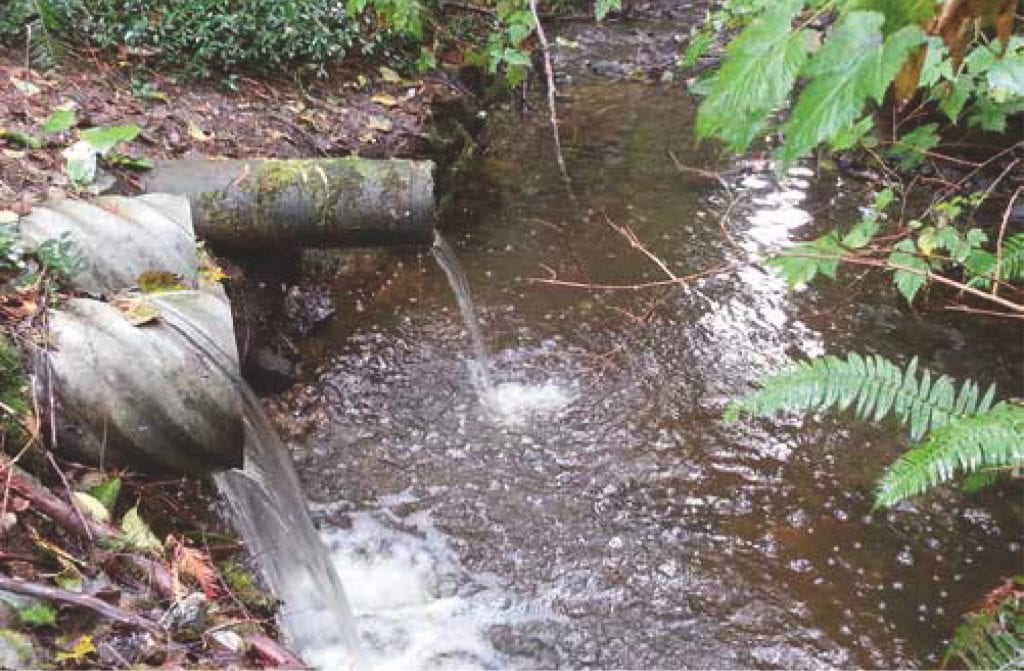
“The climate movement needs nature lovers because we are the largest arm of the environmental movement. We are an ecosystem that is deeply grounded in community, and we have this incredible thing to offer to the climate movement,” he says, adding that the climate crisis is so desperate now that everyone needs to play a role. “We need all hands on deck. And nature is one of those hands.”
Not only that, but the intellectual work of understanding how nature can help the planet heal has been going gangbusters over the past few years among academics and within international environmental organizations. With astonishing speed, the idea has taken hold that the answers lie not only in newer, fancier technology to control carbon or siphon it out of the air, but in nurturing wilderness itself. It’s raising the intoxicating idea that maybe the technology we need is already growing on the planet. All of a sudden, nature is a sexy policy play.
Some cite the Climate Action Summit at the United Nations in New York in 2019 as a turning point. China and New Zealand both took to the international stage to promote nature-based solutions. And businesses are starting to get on the bandwagon, according to CDP, a not-for-profit charity that runs a global disclosure system for investors on companies’ environmental impacts.
Saul, who spent five years as the head of Climate Action Network Canada attending international conferences where governments tried to hash out agreements to reduce carbon emissions, can trace the enormity of this evolution. He recalls some of the tortured discussions at those meetings about a forerunner to nature-based solutions called LULUCF, the acronym for land use, land use change and forestry. It represented a fiendishly complex give-and-take calculation of how humans are affecting the carbon cycle through such things as converting wild landscapes to farms, cutting down trees and planting trees.
It was “tragically funny” how difficult a concept it was to explain or get people to care about, even fervent climate activists, Saul says. Not to mention pronounce (it’s lou-lou-see-eff).
“Within the context of an already byzantine international climate negotiation, LULUCF was a particularly impenetrable set of calculations,” he says.
By comparison, nature-based solutions have a visceral, intuitive, holistic appeal. Whether it’s green roofs cleaning the air, cooling things down and soaking up carbon in Toronto, or almost 350 protected hectares of forest and riverbank slowing future flooding along New Brunswick’s Meduxnekeag River, people can visualize what these projects are doing and how they are doing it.
In Winnipeg, for example, any new neighbourhood development now has to include constructed wetlands to accompany stormwater treatment areas. Before, the areas were overgrown with unwelcome plants and treated with pesticides. That led to an explosion of blue-green algae, says Pascal Badiou, a scientist at the Institute for Wetland and Waterfowl Research at Ducks Unlimited. The algal blooms would use up all the oxygen in the water, fouling it for other life forms, and emit methane, a potent greenhouse gas that eventually converts to carbon dioxide in the atmosphere. By contrast, the constructed wetlands draw down carbon. As well, the areas are hotbeds of life: flowers, insects and birds that visitors can glory in.
Mother Nature can help heal the planet from our sins if only we’ll let her. That could mean creating landscapes that imitate nature or simply leaving nature alone to do her own thing.
That’s a necessary hallmark of any nature-based solution: it must serve more than one function at the same time. “It’s a lot more than just drawing down carbon,” Badiou says. “More important is that it helps adapt and mitigate the actual impacts of climate change.” These ideas are taking hold around the world. The IUCN cites a coastline project in Medmerry, Sussex, U.K., where engineers moved the structure that was holding back the ocean, giving 183 hectares back to the sea. The new wetland does a far better job of protecting a neighbouring town from flooding than previous constructed barriers, plus it absorbs the wave energy from the sea, meaning there’s less land erosion. As well, the project created mud flats, reed beds and grasslands so rich with wildlife that the area has spawned a tourism industry for birdwatchers and caravanners. Not only does the new system cost less to maintain than the previous one, but it is expected to generate about $155 million in direct economic benefits.
And then there are the emotional wins. The movement addresses something that has long been missing in the anguished climate discourse: the yearning to do something tangible to restore nature’s balance. This is the start of the abatement of grief.
In Gibsons, the road to becoming a global environmental pioneer began with a water problem. Already struggling with decaying infrastructure, the effects of global heating and a budget crunch, the town realized it had a new issue: the need to improve drainage from its upper part to its lower. A construction project involving concrete pipes came with an estimated price tag of $4.5 million, a sum so hefty the town would have had to borrow.
But Machado, the town’s chief administrative and resiliency officer, and other officials wondered whether there was another option. Gibsons had already begun thinking about the financial value of its natural assets, based on what it would cost to construct systems to provide similar services.
One of those assets was an aquifer nestled underneath the upper town, surrounded by creeks. Officials knew that the aquifer was already functioning as the town’s kidneys, storing and filtering water. But they wondered if it could do more. And they wondered what it would cost them to replace the municipal services the aquifer provides if it were to fail. So in 2014, they approached Michelle Molnar, an environmental economist at the David Suzuki Foundation, for technical help in evaluating just what the aquifer was capable of.
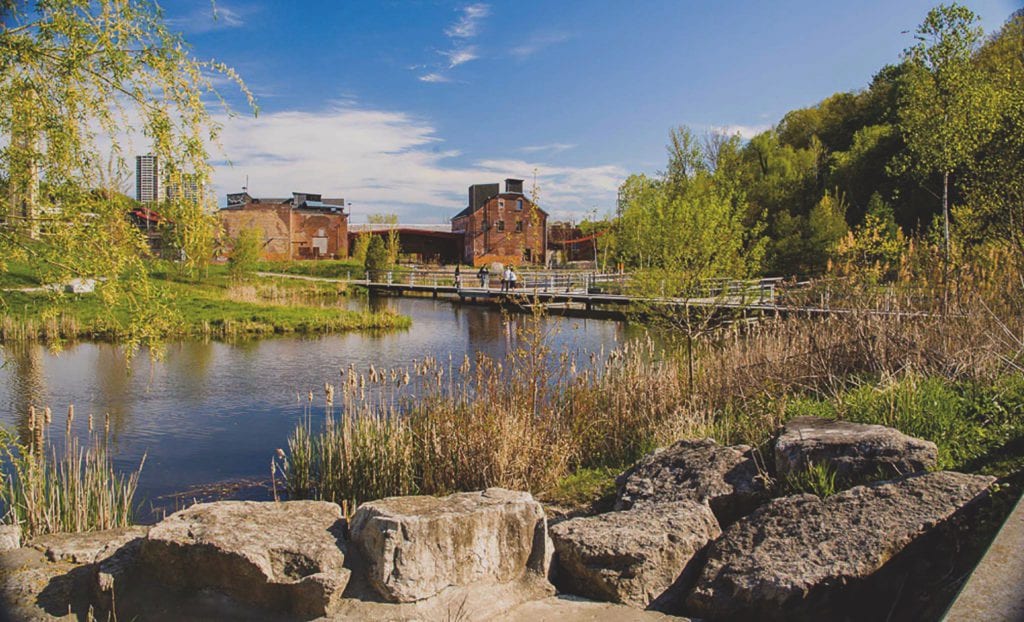
Using tools developed by Stanford University and the U.S. Environmental Protection Agency, Molnar and her colleagues showed that expanding ponds around the aquifer would do the drainage job better than the concrete pipes and at less than a quarter of the cost. The plan also meant beefing up habitat for creatures living around the aquifer, another bonus.
“Nature’s option was projected to cost about 25 cents on the dollar — and it has,” Machado says. “Moreover, we can get more stormwater treated on the site than the pipe would ever be able to take, particularly in extreme weather events and future events. So it’s a staggering difference economically, environmentally and from a risk-management perspective as well.”
The aquifer has its own line item in the annual budget. Monitoring its services costs about $30,000 a year. And while Machado says the aquifer itself is “priceless” — that it’s impossible to put a price tag on it — the value of its services is appreciating over time, especially as the climate becomes less predictable.
Machado, Molnar and others have set up the Municipal Natural Assets Initiative to encourage other municipalities to calculate the value of the services they get from their green infrastructure and formally incorporate that value into their accounts. Machado is the chair, and Molnar is technical director.
Molnar says the effort repairs an economic blind spot. “At the time we developed our economic systems, we had the view that nature was limitless, that we had dominion over nature, that we could move it, change it to meet our needs,” she says. “I couldn’t understand why the economic discipline, which is devoted to how to manage scarce resources, hadn’t been updated.”
Last December, the initiative launched a $500,000 project to encourage 30 municipalities to build an inventory of their natural assets and learn how to manage them, much as they would a water treatment plant or a sewage system. Twenty two signed up immediately, from Surrey, B.C., to Charlottetown. It’s a small percentage of the 3,600 municipalities in Canada, but it’s a start. And it’s a trend running hard against recent controversial moves in Ontario, where the province is using special orders to fast-track development on some wetlands.
Meanwhile, Machado and his team have presented their system to the federal government and to groups in South Africa, New Zealand and the United Kingdom. Officials from other parts of the world have made the pilgrimage to Gibsons to see the innovations for themselves. “Most people in Gibsons have no idea that this is happening, that nature-based solutions are being developed right here in their backyard,” Machado says.
“We need all hands on deck. And nature is one of those hands.”
Graham Saul
But while citizens may not know exactly how their town fits into the global movement, they’ve embraced a fuller understanding of the natural systems surrounding them. Machado is particularly tickled by a three-year series of art projects inspired by the aquifer, woodlands and foreshore involving multimedia installations and other displays of artwork by children and teens. Now the town is hoping the expanded ponds will be also be home to plants culturally significant to the Sk–wx–wú7mesh Úxwumixw (Squamish Nation) and maybe British Columbia’s first healing forest, designed to reflect on the legacy of residential schools.
Gibsons has also changed its bylaws and policies to encourage citizens to assess the value of the nature that surrounds them. In the old days, for example, developers of new subdivisions would scrape everything off a plot of land before building. Now, they have to identify what natural infrastructure is already there before they start to build. It’s a far cry from stump farming.
Molnar has been fascinated by the changes within the community. Like so many others, she knew Gibsons before she started to work there because she loved watching The Beachcombers. “It feels like an evolution,” she says.
Nature-based solutions offer great promise, but they are not climate salvation. Even if they were maxed out around the world and succeeded in soaking up enough carbon emissions to get us a third of the way to solving our climate emergency, that would still only be a third of the way.
So they’re definitely worth pursuing but not all that’s needed. Dealing with global heating ultimately means not burning fossil fuels. It means making the great shift to clean technologies so we’re not putting as much carbon into the atmosphere in the first place. That’s why, in addition to funding nature-based solutions, Canada has pledged to be at net-zero emissions by 2050. That puts it in a heavyweight club with more than 100 other countries. China says it will be there a decade later.
As Saul of Nature Canada puts it, nature-based solutions are one piece of a huge and complex puzzle to get carbon under control. But, he argues, they are also far more than that. They represent a fundamental rethinking of how we position ourselves on Earth. They compel us to acknowledge that we are embedded in the messy dance of life, not separate from it. Far from having dominion, we are penitents.
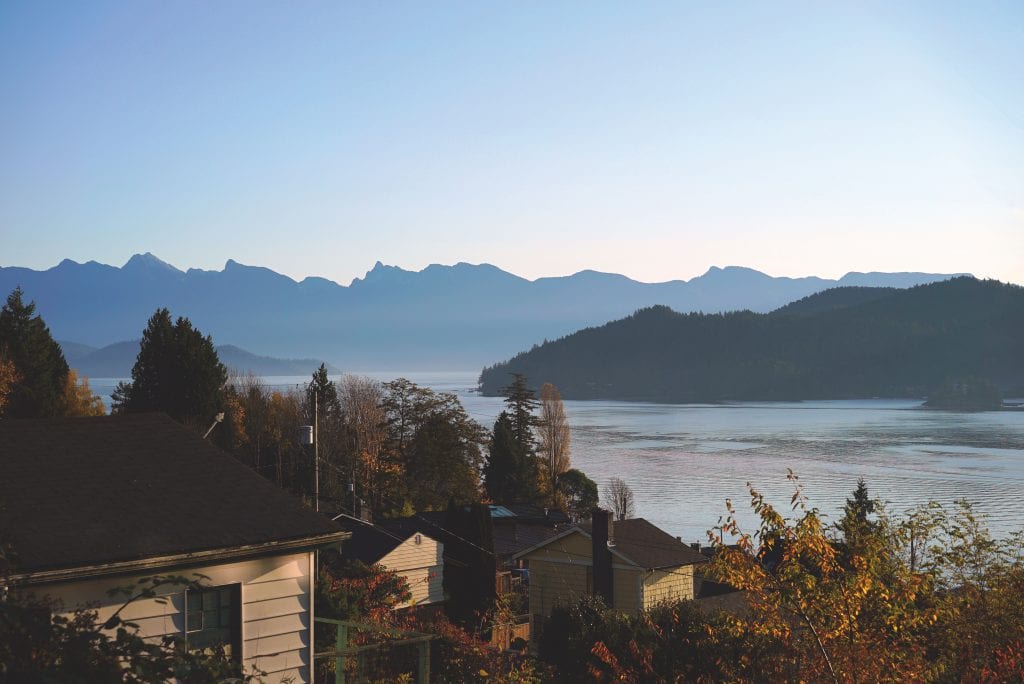
“They’re about life on Earth and how we can both address climate change and restore and protect life on Earth at the same time,” he says. “So that is in many ways much more interesting than a solar panel or an electric vehicle.”
I went back to Gibsons as I wrote this story — although only over Zoom and telephone. COVID. Machado took me on a virtual tour of the watershed that feeds the town, from Mount Elphinstone overlooking Gibsons, to the creeks that run through the community, to the coast that I once played on, and even, conceptually, deep into the hidden reaches of the aquifer that lurks below ground.
It was an astonishing environmental bird’s-eye view of a place that I used to think I knew intimately and that, I now realize, I barely knew at all.
The last time I was there in person — at my grandmother’s house — I had no frame for understanding how it all works together. I was, at that time, a financial reporter for a Toronto newspaper, writing about the kind of real-estate deals that would now raise my own eyebrows. Like Gibsons itself, I have been on an arc of discovery about how life on this planet functions.
I wanted to know how it would feel for me to live there now. So I called my chum, Wendy Francis, who moved there in 2016. She worked for environmental organizations for many years and had lived in Banff National Park for nine years before arriving in Gibsons. She has, shall we say, sophisticated environmental antennae.
Escaped logs still wash up on shore, just as they did in the days of The Beachcombers, she says. And Gibsons, a rural community after all, is still playing catch-up on such big-city givens as recycling. The mill remains in operation, although it now boasts state-of-the-art environmental controls. But for all that, the place is a wilderness wonderland. Francis moved there because of its rich nature offerings. Cross-country skiing. So many hiking and biking trails she says you can hardly count them.
She recently bought a kayak. I’ve seen photos of one of her journeys. The ocean was as flat as a mirror. She says she passed a small island covered with bickering sea lions. Some were belching. Seals frolicked nearby, and harlequin ducks hugged the shore as she paddled back to Gibsons. To me, it looked like the promised land.
***
Alanna Mitchell is an author, journalist and playwright living in Toronto.
This story first appeared in Broadview’s June 2021 issue with the title “Climate Hope.”

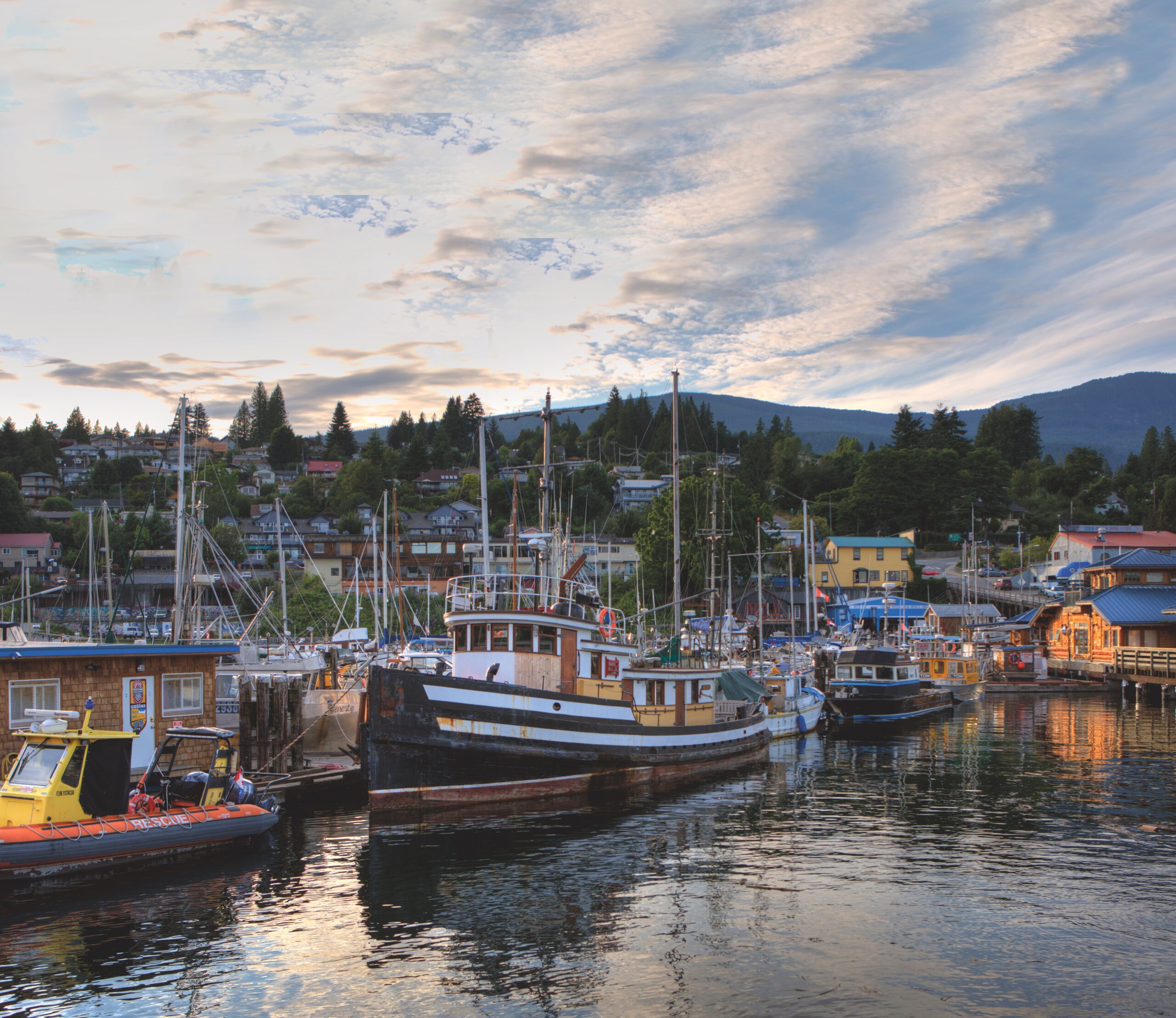







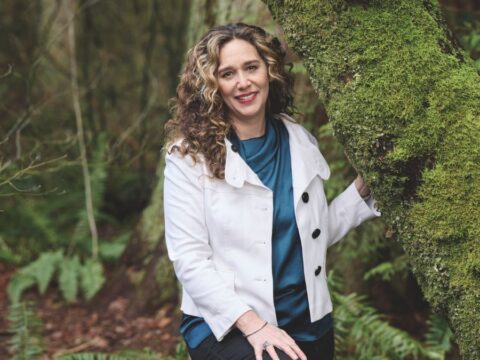


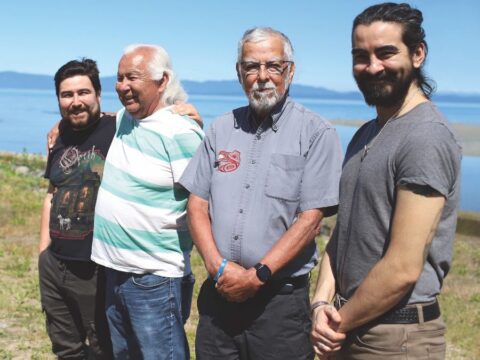

You stretch the point. I live in Gibsons and the town administration, including Mr. Machado, has fallen over itself in embracing developments that expose the ‘Nature Assets’ program as hypocritical. Did you tour the site of the proposed 10-storey George hotel and learn about its threat to the aquifer? Or the ‘Touchstone’ mega-development affectionately known as ‘Metrotown-by-the-sea’?? If you didn’t then got a distorted impression. What a surprise.
As a Gibsons resident I can confirm that the author’s “arc of discovery” was very limited and obviously didn’t include investigating beyond the claims of Gibsons town personnel. For several terms, the town and council have fallen over themselves approving several developments that threaten Gibsons aquifer and make a joke of ‘sustainable’ infrastructure. I guess your tour and tour guide didn’t mention the ‘Metrotown-by-the-sea’ development now underway or the 10-storey hotel development? Come back and get the real story.
As former mayor and councillor for 15 years and who lived adjacent to Franklin Road for many years I found the story light and naive. I was responsible for attaining the recognition as Best Water in the World from Berkeley Springs and the UN’s LivCom Most Liveable community in the World in 2009. I initiated the Smart Growth tenets others are now capitalizing on and green washing.
If you want to understand what is really happening in the town of Gibsons please connect. It’s not as idyllic as suggested. Ha! Very much not so…
Fabulous piece about a very positive development!